Introduction of Implementation Customer
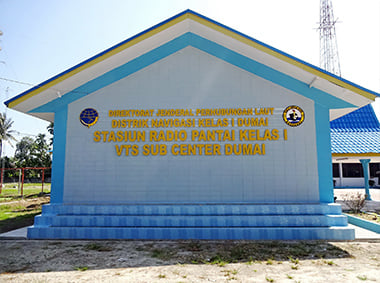
The Project for Enhancement of Vessel Traffic System in Malacca and Singapore straits in Indonesia
- Delivery Country
-
Republic of Indonesia
Directorate General of Sea Transportation (DGST)
Pre-implementation Tasks
The Project for Enhancement of Vessel Traffic System in Malacca and Singapore in Indonesia
The Straits of Malacca and Singapore bordered by Malaysia, Indonesia and Singapore, measure about 250 nautical miles and are one of the most important strategic maritime passages serving as a vital inter-continental and intra-Asia link. Recently, they have become an even more important international waterway because of today’s increasingly interdependent regional and global economy, with more than 90,000 ships per annum passing through the Strait including 14,000 Japanese cargo related vessels, and leading to widespread recognition of the need to ensure maritime traffic safety.
It is also no exaggeration to say that the safety of passage through the Straits of Malacca and Singapore has contributed immensely to the economic development and vitality of Malaysia, Indonesia and Singapore. The safety of passage through the two Straits makes a significant difference between the growth and decline of the littoral states. This is particularly true for the littoral states’ economies, which are extremely dependent on water-borne external trade.
Furthermore, since most of East Asia’s oil imports from the Middle East pass through the Straits of Malacca and Singapore, it is therefore in the interests of the global community to ensure that the smooth and safe passage through the Straits of Malacca and Singapore is always preserved. Apart from navigational safety, the prevention of pollution caused by shipping accidents in the two Straits is equally important. When it comes to protection of marine environment, it is imperative that safety management of maritime traffic is ensured with adequate measures in place to avoid such pollution in such a busy international waterway.
However, there has been growing concern that the increase in shipping traffic in the Straits may have serious implications for and critical impact on the safety of ships and the quality of the Straits’ maritime environment. This issue needs to be urgently addressed by the Government of the Republic of Indonesia. Actually, as the traffic volumes grow, the risk of accidents and pollution increases too. Both major and minor incidents in the Straits have been caused by accidents involving collisions, contacts, explosions, fires, and others. Further serious is the extent of the casualties, many of which result in loss of lives, pollution damage, and loss of earnings for those whose livelihood depends on the Straits.
Against the backdrop of a pressing need for modern technology and management system to be put in place to enhance maritime security and to protect maritime environment, the establishment of Vessel Traffic System(VTS) was an urgent issue for the Government of the Republic of Indonesia. Until now, there was no suitable sea surveillance system in operation to monitor the approaches and access channels of a port in areas having high traffic density, movements of noxious or dangerous cargos, navigational difficulties, narrow channels or environmental sensitivity.
Installation location at Phase-1 project
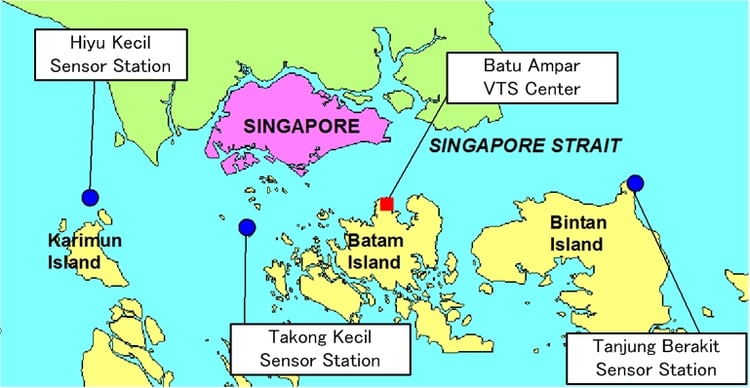
Installation location at Phase-2 project
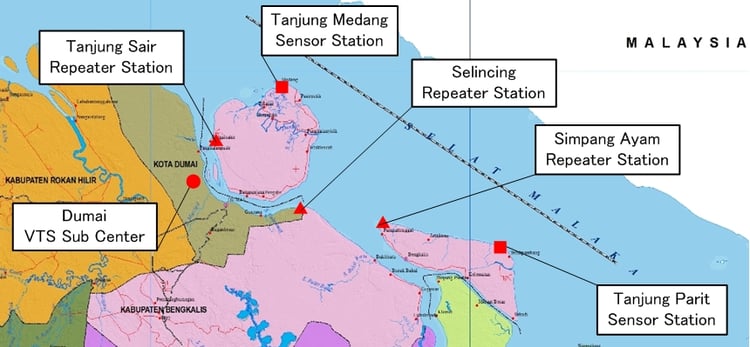
Points of the Project and Solutions
The Monitoring system of marine traffic utilizing VTS radar sensors.
In response to the request by the Indonesian Government, the Japanese Government decided on a grant aid for implement ing the project , which JRC was awarded, to supply equipment suc h as radar system with GPS, radar tracking system, muilti-function console, VHF radio communication system, transmission and communication links, AIS, CCTV camera system, VTS data system and web server, recording and playback unit, meteorolocical sensor, power generator, and air conditioner. The project was successfully handed over to the Indonesian government in June 2017.
Installed on Phase-1 project
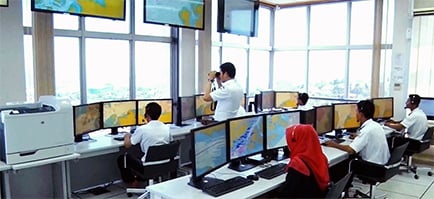
Batu Ampar VTS Operator Room

Batu Ampar VTS Center
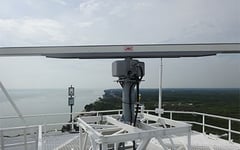
Radar System
Installed on Phase-2 project
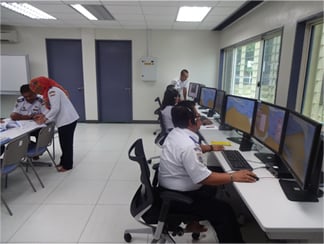
Dumai VTS Sub Center
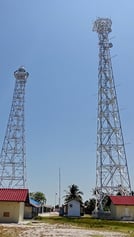
Tanjung Medang Radar Station
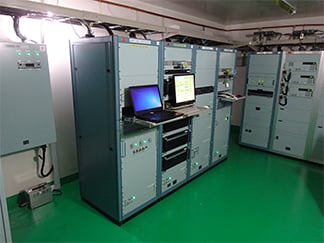
Equipment Room in the Dumai VTS Sub Center
Post-implementation Effects
The establishment of Vessel Traffic System prevents dangerous situations from occurring.
The establishment of Vessel Traffic System(VTS) prevents dangerous situations from occurring that would otherwise have turned into fatal accidents, ensuring that the smooth and safe passage through the Straits of Malacca and Singapore is always preserved. Under the accurate and continuous monitoring of vessels including oil tankers, accidents can be reduced that would cause catastrophic pollution to the maritime environment especially in such a busy international waterway such as the Straits.
